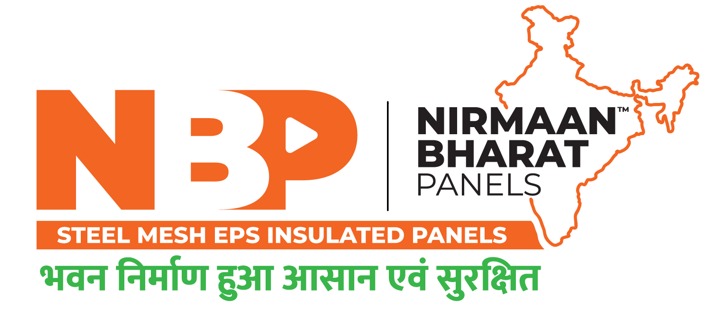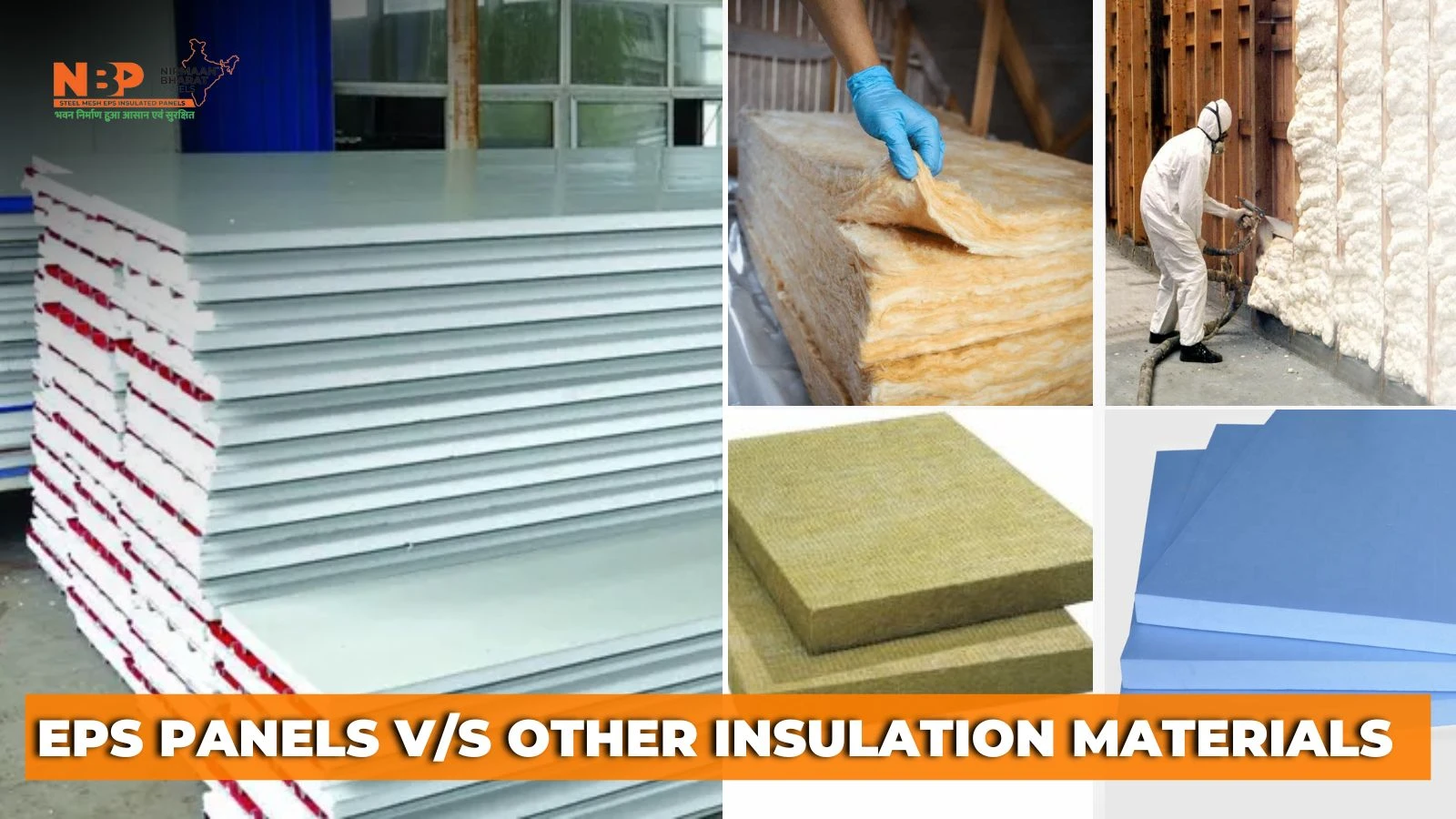In today’s construction industry, energy efficiency and sustainable building practices have become paramount. One of the key aspects of achieving these goals is the choice of insulation materials. Among the various options available, Expanded Polystyrene (EPS) panels have gained significant attention due to their favorable properties. This blog will delve into a comprehensive comparison of EPS panels vs other insulation materials, helping you determine which insulation option is best for your specific needs.
Table of Contents
ToggleWhat Are EPS Panels?
Expanded Polystyrene (EPS) panels are lightweight, rigid foam insulation materials made from polystyrene beads. These beads are expanded and molded into rigid foam sheets, creating a closed-cell structure. EPS panels are widely used in construction for their excellent thermal insulation properties, moisture resistance, and ease of installation. They are commonly found in walls, roofs, and foundation systems, providing a reliable barrier against heat loss and gain.
Key Properties of EPS Panels
- Thermal Performance: EPS panels offer a high R-value (thermal resistance), which signifies their ability to resist heat flow. This property makes them effective in reducing energy consumption for heating and cooling.
- Moisture Resistance: The closed-cell structure of EPS panels prevents water absorption, making them resistant to moisture-related issues like mold and rot.
- Lightweight and Easy to Handle: EPS panels are lightweight, making them easy to transport and install. This characteristic can reduce labor costs and construction time.
- Cost-Effectiveness: Compared to many other insulation materials, EPS panels are often more affordable, providing an excellent balance between performance and price.
- Versatility: EPS panels can be used in a variety of applications, including residential and commercial buildings, cold storage facilities, and more.
Comparing EPS Panels vs Other Insulation Materials
To determine whether EPS panels are the best option for insulation, it’s essential to compare them with other popular insulation materials, including fiberglass, spray foam, and mineral wool.
1. EPS Panels vs. Fiberglass Insulation
Thermal Performance: Fiberglass insulation typically has a lower R-value than EPS panels, which means it may not provide as effective thermal insulation. While fiberglass can be effective in certain applications, it often requires additional layers or thicker installations to achieve the same level of insulation as EPS.
Moisture Resistance: Fiberglass is more susceptible to moisture absorption compared to EPS panels. When fiberglass gets wet, its thermal performance diminishes, and it may lead to mold growth. EPS panels, with their moisture resistance, avoid these issues.
Installation: EPS panels are easier to install due to their rigid nature, while fiberglass insulation requires careful handling to avoid compression, which can reduce its effectiveness. Additionally, fiberglass can irritate the skin and respiratory system during installation, necessitating protective gear.
Cost: Generally, fiberglass insulation is less expensive upfront, but the potential for increased energy costs due to lower thermal performance may negate those savings in the long run.
2. EPS Panels vs. Spray Foam Insulation
Thermal Performance: Spray foam insulation typically offers a higher R-value per inch than EPS panels, making it an excellent option for tight spaces. However, EPS panels provide a consistent R-value over a larger area.
Moisture Resistance: Both EPS panels and spray foam insulation have good moisture resistance, but spray foam can create an airtight seal, which can be beneficial for energy efficiency. However, if not applied correctly, spray foam can lead to moisture trapping and other issues.
Installation: Spray foam insulation requires professional installation due to its complexity and the need for specialized equipment. EPS panels are easier for DIY installations and can significantly reduce labor costs.
Cost: Spray foam insulation tends to be more expensive than EPS panels. While it may offer superior performance, the initial investment can be a significant factor for many homeowners and builders.
3. EPS Panels vs. Mineral Wool Insulation
Thermal Performance: Mineral wool (or rock wool) insulation has a competitive R-value, but it is generally lower than that of EPS panels. For applications requiring high thermal efficiency, EPS panels may be the better choice.
Moisture Resistance: Mineral wool is naturally resistant to moisture and mold; however, it can absorb water, which may lead to a decrease in thermal performance. EPS panels, on the other hand, remain unaffected by moisture.
Fire Resistance: One advantage of mineral wool is its fire-resistant properties. It can withstand high temperatures and does not burn, making it suitable for applications requiring stringent fire safety standards. EPS panels are flammable, but they can be treated with fire retardants to improve their safety.
Installation: Like fiberglass, mineral wool insulation can be challenging to handle and requires careful installation to maintain its effectiveness. EPS panels are easier to work with and can be installed without specialized skills.
Cost: Mineral wool insulation is typically more expensive than EPS panels. While it provides excellent fire resistance and soundproofing qualities, the overall cost may not justify its benefits for all applications.
4. EPS Panels vs. XPS Insulation
Thermal Performance: Extruded Polystyrene (XPS) insulation generally has a slightly higher R-value than EPS panels, making it a strong competitor in terms of thermal resistance. However, the differences in R-value are often marginal and depend on the specific product and thickness used.
Moisture Resistance: XPS has superior moisture resistance compared to EPS, making it an excellent choice for below-grade applications or areas prone to water exposure. While EPS panels are moisture resistant, they can absorb some water over time if not properly protected.
Durability: XPS is known for its durability and resistance to compression, which makes it suitable for use in high-load applications like under slabs or in foundation walls. EPS panels can be compressed under heavy loads, potentially reducing their insulating effectiveness.
Cost: XPS insulation is typically more expensive than EPS panels. While XPS offers some advantages in specific applications, the increased cost may not be justifiable for projects where EPS can meet the insulation needs.
Installation: Both EPS and XPS panels are relatively easy to install; however, the added weight of XPS can make handling slightly more cumbersome than EPS. Nevertheless, both materials can be installed without the need for specialized equipment, making them accessible for DIY projects.
Environmental Impact
When choosing insulation materials, it’s also important to consider their environmental impact. EPS panels are recyclable, and their production process can be more environmentally friendly than that of some other insulation materials. In contrast, spray foam insulation typically involves chemicals that can be harmful to the environment. Mineral wool, although made from natural materials, can have a higher carbon footprint due to its manufacturing process.
Conclusion: Which Is Best?
Determining the best insulation material ultimately depends on your specific project requirements, budget, and environmental considerations. Here’s a quick summary of when to choose EPS Panels vs Other Insulation Materials:
- Choose EPS Panels When:
- You need a lightweight and easy-to-install insulation solution.
- Moisture resistance is a priority for your project.
- You are looking for a cost-effective insulation option with good thermal performance.
- You are seeking versatility for various applications.
- Consider Alternatives When:
- You require a higher R-value in a very tight space (spray foam).
- Fire resistance is a crucial factor (mineral wool).
- You prefer lower upfront costs, even with potential long-term energy expenses (fiberglass).
In conclusion, EPS panels present a compelling option for insulation, balancing performance, cost, and ease of installation. They may not be the best choice for every scenario, but they certainly hold their own against other insulation materials in many common applications. By understanding the strengths and weaknesses of EPS panels in comparison to alternatives, you can make an informed decision that meets your insulation needs effectively.


